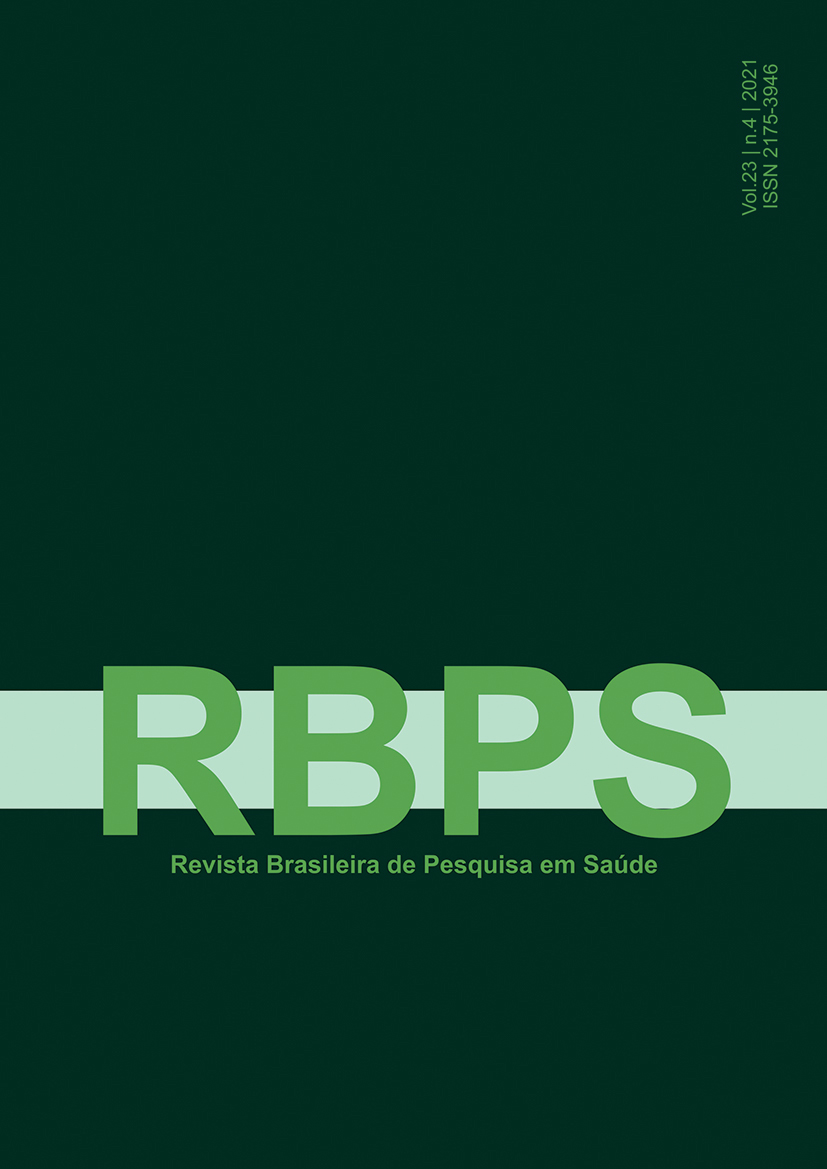Emprego da indução de periodontite experimental em camundongos para estudos clínicos: métodos e resultados
DOI:
https://doi.org/10.47456/rbps.v23i4.36047Palabras clave:
Camundongos, Periodontite, Porphyromonas, LigaduraResumen
Introdução: Estudos têm buscado a utilização de métodos para indução da periodontite experimental em camundongos para análise do processo inflamatório e fatores terapêuticos alternativos. Objetivos: Realizar uma revisão de literatura integrativa sobre os métodos e resultados de pesquisas realizadas em camundongos a fim de induzir um processo inflamatório de periodontite. Métodos: Utilizar metodologia qualitativa e definição da pergunta norteadora: Quais os principais métodos e resultados na indução de periodontite experimental em camundongos? Os MeSHterms: “Periodontitis” e “Mice” foram usados para a busca dos artigos científicos na base de dados PubMed. Foram encontrados 4.192 trabalhos na íntegra; destes, 16 artigos encontravam-se duplicados nas estratégias de busca, totalizando, assim, 7 artigos selecionados. Resultados: O processo inflamatório da periodontite em camundongos pode ocorrer com mais eficácia com a utilização da ligadura do que pela gavagem, visto que ocorre uma resposta pelas células imunológicas para o ataque do agente agressor, sendo a ligadura um agente que estará de maneira constante e corriqueira na região instalada do que pela gavagem. Entre as metodologias para indução da periodontite, foram observadas àquelas com aplicação do patógeno bacteriano diretamente no tecido gengival; aplicação de LPS provenientes de P. gingivalis; colocação de ligadura com fio de seda embebido por P. gingivalis; e colocação de ligadura com fio de seda sem embebição por bactérias. Conclusão: Nesse modelo animal para estudo da periodontite observaram-se algumas alterações fisiológicas, como distúrbios imunológicos e alterações na frequência cardíaca. Portanto, os resultados dessa revisão responderam à pergunta norteadora estabelecida na metodologia.
Descargas
Referencias
Guimarães C et al. Atividade antimicrobiana in vitro do extrato aquoso e do óleo essencial do alecrim (Rosmarinus officinalis L.) e do cravo-da-índia (Caryophyllus aromaticus L.) frente a cepas de Staphylococcus aureus e Escherichia coli. R. Bras. Bioci. 2017; 15(2): 83-89.
Sousa RAL et al. Aspectos éticos em animais de laboratório e os principais modelos utilizados em ensaios científicos. RESBCAL. 2013; 2(2): 147- 154.
Rêgo J et al. Ética e bem-estar em animais de laboratório. RESBCAL. 2019; 7(1): 69-76.
Lapchik V et al. Cuidados e manejo de animais de laboratório. 2ª Ed. Atheneu. 2017.
Rother ET. Revisão sistemática X revisão narrativa. Acta Paulista de Enfermagem. 2007; 20(2):v.
Souza MT, Silva MD, Carvalho R. Revisão integrativa: o que é e como fazer. Einstein. 2010; 8(1): 102-106.
Pereira AS et al. Metodologia da pesquisa científica. [e-book]. Santa Maria. Ed. UAB/NTE/UFSM. 2018.
Blasco-Baque V et al. Periodontitis induced by Porphyromonas gingivalis drives periodontal microbiota dysbiosis and insulin resistance via an impaired adaptive immune response. Gut. 2017; 66(5): 872–885.
Li X et al. New Application of Psoralen and Angelicin on Periodontitis With Anti-bacterial, Anti-inflammatory, and Osteogenesis Effects. Frontiers in Cellular and Infection Microbiology. 2018; 8: 178.
Ting Y et al. Impacts of periodontitis on visceral organ weight and weight percentage in obese mice. West China Journal of Stomatology. 2018; 36(5), 514–520.
Chi L et al. Increased cortical infarction and neuroinflammation in ischemic stroke mice with experimental periodontitis. Neuroreport. 2019; 30(6): 428–433.
Korah L et al. Experimental periodontitis in Msx2 mutant mice induces alveolar bone necrosis. Journal of Periodontology. 2020; 91(5), 693–704.
Maekawa S et al. RNA sequencing for ligature induced periodontitis in mice revealed important role of S100A8 and S100A9 for periodontal destruction. Scientific Reports. 2019; 9(1), 14663.
Ribeiro AB et al. Cardiovascular and Autonomic Dysfunction in Murine Ligature-Induced Periodontitis. Scientific Reports. 2020; 10(1): 6891.
Brasil. Presidência da República. Lei nº 11.794, de 8 de outubro de 2008. Regulamenta o inciso VII do parágrafo 1º do artigo 225 da Constituição Federal, estabelecendo procedimentos para o uso científico de animais; revoga a Lei nº 6.638, de 8 de maio de 1979; e dá outras providências. [Internet]. Diário Oficial da União. 2008.
Franco AL et al. Pesquisas em animais: uma reflexão bioética. Acta Bioethica. 2014; 20(2): 247-253.
Dangelo JG, Fattini CA. Anatomia humana sistêmica e segmentar. São Paulo: Atheneu. 2007; 708p.
Kardong KV. Vertebrados: anatomia comparada, função e evolução. São Paulo: Rocca. 2010; 913p.
Pereira S et al. An alternative, easy and reproducible method of stabilization and ligature-induced periodontitis in mouse. Methods X. 2018; 6: 2156-2165.
Janakiram C et al. Effectiveness of herbal oral care products in reducing dental plaque & gingivitis – a systematic review and meta-analysis. BMC Complementary Medicine and Therapies. 2020; 20: 43.
Rathee M, Jain P. Gingivitis. In: StatPearls [Internet]. Treasure Island (FL): StatPearls Publishing. 2020.
Descargas
Publicado
Número
Sección
Licencia
Derechos de autor 2022 Revista Brasileira de Pesquisa em Saúde

Esta obra está bajo una licencia internacional Creative Commons Atribución-NoComercial-SinDerivadas 4.0.
La RBPS adopta la licencia CC-BY-NC 4.0, lo que significa que los autores mantienen los derechos de autor de sus trabajos presentados a la revista.
- Los autores deben declarar que su contribución es un manuscrito original, que no ha sido publicado previamente y que no está en proceso de evaluación en otra revista simultáneamente.
- Al presentar el manuscrito, los autores conceden a la RBPS el derecho exclusivo de primera publicación, sujeto a revisión por pares.
Derechos de los autores:
Los autores pueden firmar contratos adicionales para la distribución no exclusiva de la versión publicada por la RBPS (por ejemplo, en repositorios institucionales o como capítulos de libros), siempre que se reconozca la autoría y la publicación inicial en la RBPS. Además, se anima a los autores a poner su trabajo a disposición en línea (por ejemplo, en repositorios institucionales o en sus páginas personales) tras la publicación inicial en la revista, citando debidamente la autoría y la publicación original.
Derechos de los lectores bajo la licencia CC-BY-NC 4.0:
- Compartir: Copiar y redistribuir el material en cualquier medio o formato.
- Adaptar: Mezclar, transformar y construir a partir del material.
Condiciones de la licencia:
- Atribución: Debe otorgarse el crédito adecuado, incluir un enlace a la licencia e indicar si se realizaron cambios.
- No Comercial: No se puede usar el material con fines comerciales.
- Sin restricciones adicionales: No se pueden aplicar términos legales o medidas tecnológicas que restrinjan lo que la licencia permite.

























